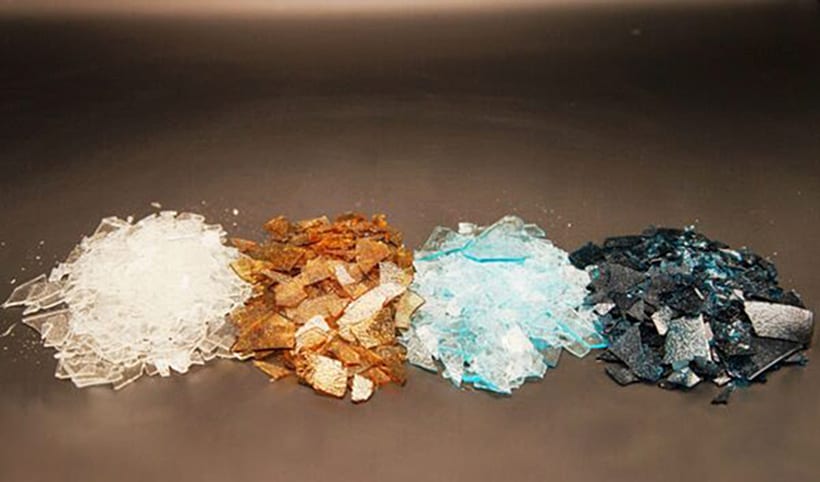news & trends
C&GM INDUSTRY NEWS:
Proposed ban threatens budding agrivoltaic industry in the Netherlands
Despite the recorded benefits of agrivoltaics, or the practice of co-locating photovoltaic infrastructure and agriculture, an either/or mentality toward solar panels and crops remains a common perspective in governing bodies around the world. As such, numerous countries have proposed limitations or bans on solar deployments on agricultural land, which prevents the mutually beneficial practice of agrivoltaics from taking place.
Two recent media announcements out of the Netherlands reveal how this approach to solar regulation could severely hamper the country’s budding agrivoltaic industry.
Raspberry orchard set to host one of Europe’s largest agrivoltaic plants
On June 12, 2023, German renewable energy company BayWa r.e. and its Dutch subsidiary GroenLeven announced plans to construct an 8.7 MW agrivoltaic plant in the Netherlands.
The plant will consist of 24,206 solar panels installed on the Piet Albers raspberry farm in Babberich, which is owned by local farmer Maarten van Hoof. A 2020 pilot project on the same site set the background for this full-scale expansion. After successful results, van Hoof decided that BayWa r.e. should outfit his entire raspberry crops with solar panels.
When completed, BayWa r.e. says the plant will be Europe’s biggest renewable energy project using photovoltaic modules above fruits. It will protect the raspberries from bad weather while also producing enough energy for more than 2,800 households.

A pilot agrivoltaic plant installed by German renewable energy company BayWa r.e. on a raspberry farm in the Netherlands.
Credit: BayWa r.e.
Funding for the project came from government subsidies as well as van Hoof. BayWa r.e. expects to complete installation by the first quarter of 2024.
On a webpage describing the upcoming plant, BayWa r.e. notes that the company recently partnered with Wageningen University & Research (the Netherlands) to investigate the combination of agrivoltaics with other berry crops, including redcurrant, blueberries, blackberries, and strawberries.
Dutch parliament considers banning solar parks on agricultural land
On July 6, 2023, Dutch Minister of Economic Affairs and Climate Policy Micky Adriaansens sent a letter (in Dutch) to the Dutch parliament proposing a nationwide ban on solar deployments on agricultural land.
The letter is not without precedent. In 2019, the Dutch parliament authorized initial soft restrictions for solar parks on agricultural land. These regulations stipulated that large-scale solar projects had to adhere to the informal “Zonneladder” preference scheme, which prioritizes solar rooftop locations over ground-mounted projects.
If this ban is implemented—which could be as soon as July 2024—local farmers will no longer have the authority to install agrivoltaic systems on their fields, similar to raspberry farmer van Hoof in the section above.
Dutch photovoltaic association Holland Solar released a response letter (in Dutch) on July 7 that stresses a nationally imposed ban does not work in the best interests of either farmers or net-zero targets.
Instead, the decision should be left to local authorities who “can properly assess the local situation, with national support for solar energy, protection of existing natural values on agricultural land, and frameworks for the nature-inclusive development of sustainable energy and for combinations of sun and agriculture,” the translated letter states.
ADVERTISEMENT
Perovskite solar cells charge ahead to record-breaking efficiencies
The market for solar energy is growing quickly, with installed power capacity exceeding 1,000 TWh in 2021. Though prices have dropped significantly in recent years, power conversion efficiency remains a limitation due to continued reliance on silicon, the traditional photovoltaic material.
The average power conversion efficiency for current silicon-based solar panels is about 22%. Though a record efficiency of 26.81% was achieved by Chinese photovoltaics company LONGi in November 2022, the maximum theoretical efficiency for silicon-only solar cells is just 29%.
To increase efficiency beyond 29%, other materials besides silicon will be needed. Perovskites, a class of materials with the same crystal structure as calcium titanate (CaTiO3), are attracting attention because of their high light absorption efficiency and ease of fabrication. They also can be made from inexpensive raw materials.
In December 2020, researchers at Technical University Berlin demonstrated the power of perovskites when they overcame the silicon-only efficiency limit. They achieved a record 29.15% efficiency with a perovskite–silicon tandem solar cell.
The potential of perovskites, both in combination with silicon and alone, is gaining steam. Below is a snapshot of some of the biggest advancements in this field in recent months.

Oxford PV set a new world record for the efficiency of a commercial-sized perovskite tandem solar cell in May 2023.
Credit: Oxford PV
A year of records for perovskite–silicon tandem solar cells
In the past year, several groups have set new efficiency records for perovskite–silicon tandem solar cells.
In October 2022, a team of researchers from the Netherlands achieved 30% efficiency for the first time with a four-terminal device. Two months later, German researchers at Helmholtz-Zentrum Berlin achieved 32.5%, an efficiency that was officially confirmed by the European Solar Test Installation (ESTI) and the National Renewable Energy Laboratory.
In April 2023, scientists led by King Abdullah University of Science and Technology achieved 33.2% efficiency. They almost immediately surpassed this record in May with an ESTI-certified efficiency of 33.7%.
In June 2023, LONGi announced it had achieved a close second-highest efficiency with an ESTI-certified 33.5%.
In May 2023, Oxford PV, a spinoff company from Oxford University, announced it achieved a record 28.6% efficiency for a commercial-sized tandem solar cell. This record, which was independently certified by Fraunhofer ISE, is more than 1.5% above Oxford PV’s previous record for a device produced on their world-first volume manufacturing line for perovskite-on-silicon tandem solar cells.
According to a Reuters article, Oxford PV plans to commercially launch a tandem solar cell later this year, with a predicted conversion efficiency of 27% and energy yield of 24%.
There still is much room for growth with perovskite–silicon tandem solar cells. According to that same Reuters article, the maximum theoretical efficiency for these cells is 43%.
Developments in all-perovskite solar cells
In addition to perovskite–silicon tandem solar cells, there is also research taking place on all-perovskite solar cells. These cells are expected to provide more flexibility, be lighter weight, and have a lower environmental impact than cells that rely on silicon wafers.
In December 2022, researchers led by East China Normal University reported an inverted perovskite solar cell with the highest efficiency (22.15%) and highest fill factor (83.92%) to date. Key to their success was using the molecule daminozide as an interlayer and additive, which passivated defects at the interface as well as in the perovskite bulk.
In May 2023, researchers at the University of Tabriz in Iran and Bilkent University in Turkey used numerical simulations to show how an inverted perovskite solar cell could achieve an efficiency of 24.83% efficiency (with fill factor of 79.4%) depending on the bilayer configuration.
In June 2023, Nanjing Tech University researchers nearly achieved such a high efficiency in real life by fabricating a perovskite solar cell with a unique “Mortise-Tenon” structure. Their cell, which was created via a joining method typically used in woodworking, demonstrated a 24.55% efficiency.
Just a few days later in June, a different study by Nanjing University researchers reported a record-high efficiency notably surpassing these other studies with a certified 28.0% efficiency (with fill factor of 82.6%.). The cells, which were based on a 3D/3D bilayer perovskite heterojunction, retained more than 90% of their initial performance after 600 hours of continuous operation under simulated one-sun illumination.
Caltech announces first-ever wireless power transfer of space-based solar energy back to Earth
Even as investment in clean energy technologies reaches new heights, the intermittent nature of solar and wind power remains a perennial challenge. The ability of atmospheric conditions to impede access to these energy sources means new storage technologies must be developed to store the energy when it is available.
What if there was a way to ensure predictable and constant access to these sources? Though the idea may sound like science fiction, space-based solar power systems could turn this possibility into reality.
The space-based solar power concept posits that high intensity, uninterrupted solar radiation can be collected in space using satellite-based solar panels. Because these panels would be outside Earth’s atmosphere, they would not be affected by clouds or nighttime. The collected energy could then be transmitted back to Earth in the form of lasers or microwaves.
On June 1, 2023, researchers at the California Institute of Technology (Caltech) reported that their space-based solar power prototype, which launched into orbit in January 2023, demonstrated the ability to beam detectable power back to Earth for the first time.

Engineers carefully lower the DOLCE portion of the Space Solar Power Demonstrator onto the Momentus Vigoride spacecraft before the mission’s launch in January 2023.
Credit: Caltech, Space Solar Power Project
The experiment is part of Caltech’s ongoing Space Solar Power Project (SSPP). SSPP owes its existence to the generosity of philanthropist Donald Bren, chairman of Irvine Company and a lifetime member of the Caltech Board of Trustees.
Bren first learned about the potential for space-based solar power through a Popular Science magazine article. In 2011, he approached Caltech’s then-president Jean-Lou Chameau to discuss the creation of a space-based solar power research project. In 2013, Bren and his wife, Brigitte, also a Caltech trustee, made the first of their donations—which now exceed $100 million—through the Donald Bren Foundation to fund the project.
The project also received financial support from Northrop Grumman, which provided Caltech $12.5 million between 2014–2017 through a sponsored research agreement.
The recent milestone experiment was achieved during testing of three key technologies on Caltech’s ongoing Space Solar Power Demonstrator (SSPD) mission.
- MAPLE (Microwave Array for Power-transfer Low-orbit Experiment). This array of flexible lightweight microwave power transmitters is the device that successfully beamed energy back to Earth. It uses constructive and destructive interference between individual transmitters to shift the focus and direction of the energy it beams out—without any moving parts.
- DOLCE (Deployable on-Orbit ultraLight Composite Experiment). A structure measuring 6 feet by 6 feet that demonstrates the architecture, packaging scheme, and deployment mechanisms of the modular spacecraft, which would eventually comprise a kilometer-scale constellation forming a power station.
- Alba. A collection of 32 different types of photovoltaic cells to enable an assessment of the types of cells that are the most effective in the punishing environment of space.
An additional fourth component of SSPD is a box of electronics that interfaces with the Momentus Vigoride spacecraft computer and controls the three experiments.
According to the Caltech press release on this mission, the Alba tests of solar cells are ongoing; the team has not yet attempted to deploy DOLCE. Results from these experiments are expected in the coming months.
C&GM Industry News
LG Electronics grows its advanced materials business
LG Electronics’ advanced materials business is now using an in-house developed antimicrobial glass powder and marine glass, which the company says will help grow its new advanced materials business. The company’s antimicrobial glass powder is made at LG Smart Park in Changwon, Republic of Korea, which produces 4,500 tons of the material annually.

The antimicrobial glass powder was initially applied to LG ovens launched in North America in 2013.

Corning creates joint venture in India
Corning and SGD Pharma announced a joint venture to open a glass tubing facility in Telangana, India, to expand access to Corning’s Velocity Vial technology in India. The agreement combines SGD Pharma’s vial-converting expertise with Corning’s proprietary glass-coating technology. “The joint venture supports our continued global expansion as we localize manufacturing for our customers,” says Ron Verkleeren, senior vice president and general manager of Corning’s Life Sciences Market Access Platform.

Manufacturing of Velocity Vials at SGD Pharma’s facility in Vemula, India, is expected to begin in 2024.

Coherent Corp. to develop SiC devices for Mitsubishi Electric
Pittsburgh-based Coherent Corp. signed a memorandum of understanding with Mitsubishi Electric to collaborate on a program to scale manufacturing of silicon carbide power electronics. Mitsubishi Electric announced an investment of 260 billion yen in the five-year period ending March 2026, with about 100 billion yen for the construction of a new plant for SiC power devices. Under the MOU, Coherent will develop a supply of 200-mm n-type 4H SiC substrates for Mitsubishi’s future SiC power devices manufactured at the new facility.

The expanding market for electric vehicles is driving the growth in silicon carbide power devices. Credit: Martin Martschini

Mines carbon storage project awarded DOE funding
Colorado School of Mines, Carbon America, and Los Alamos National Laboratory were awarded $32.6 million from the U.S. Department of Energy’s Carbon Storage Assurance Facility Enterprise initiative to advance the development of a carbon storage hub for the Pueblo, Colo., area. It was one of nine projects selected by DOE as part of a $242-million nationwide investment to accelerate the development of large-scale, commercial carbon storage projects with capacities to securely store carbon dioxide deep underground.

The funding will cover data collection, site characterization, planning, permitting, and community and stakeholder engagement.

Ardagh Glass builds large-scale hybrid furnace
Ardagh Glass GmbH is constructing a hybrid furnace to enable a switch to renewable electricity at its glass production facility in Obernkirchen, Germany. The large-scale hybrid electric furnace will run predominantly on renewable electricity and a small amount of gas. It will use high levels of recycled glass cullet to produce up to 350 tonnes of glass bottles per day.

The hybrid technology will reduce CO2 emissions by as much as 60% in the furnace.

NSF invests in nine materials research centers
The U.S. National Science Foundation will invest $162 million in nine Materials Research Science and Engineering Centers to transform scientific breakthroughs into benefits for multiple sectors of the U.S. economy. The centers are Illinois Materials Research Science and Engineering Center at the University of Illinois at Urbana-Champaign; Center for Dynamics and Control of Materials at the University of Texas; University of Washington Molecular Engineering Materials Center; Northwestern University Materials Research Science and Engineering Center; Laboratory for Research on the Structure of Matter at the University of Pennsylvania; Materials Research Laboratory at the University of California, Santa Barbara; Wisconsin Materials Research Science and Engineering Center at the University of Wisconsin; Center for Advanced Materials & Manufacturing at the University of Tennessee; and Center for Materials Innovations at the University of Michigan. Each center will receive $18 million over six years.

A molecular-beam epitaxy system at the University of Michigan. Credit: Evan Dougherty/Michigan Engineering

Hydro and Saint-Gobain Glass partner to decarbonize building facades
Hydro Building Systems entered into an agreement with Saint-Gobain Glass to reduce the carbon footprint of building facades in half by integrating the low-carbon solutions offered by both companies. Hydro Building Systems uses a high percentage of recycled post-consumer scrap in its aluminum facades, while Saint-Gobain Glass produces low-carbon glass products using renewable electricity and recycled content.

Bruno Mauvernay, left, managing director of the glass facades unit at Saint-Gobain, and Henri Gomez, vice president at Hydro Building Systems.

Research partnership examines hydrogen fuel for refractories
The U.K.-based Materials Processing Institute announced a research partnership with Trent Refractories and Swedish industrial heating technology company Kanthal to examine the impact on industrial processes of using hydrogen as an alternative fuel source. The three-year agreement will focus on the effect of hydrogen on refractories and will also test a range of electrical elements for use in high-temperature applications in a hydrogen environment.

The research will examine the effect of hydrogen on heat-resistant materials that form the linings of furnaces, crucibles, kilns, and ladles.


